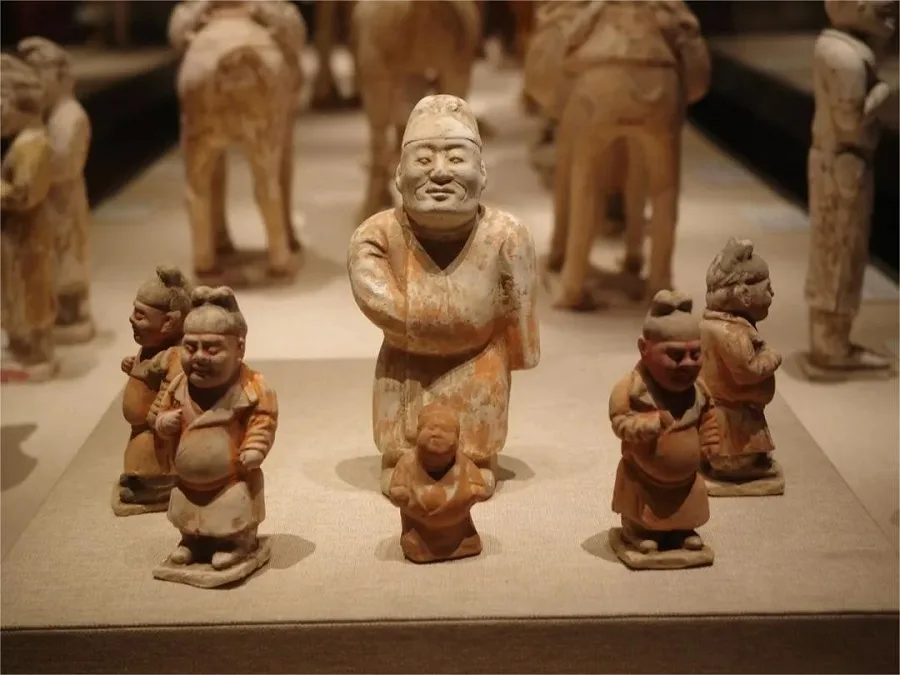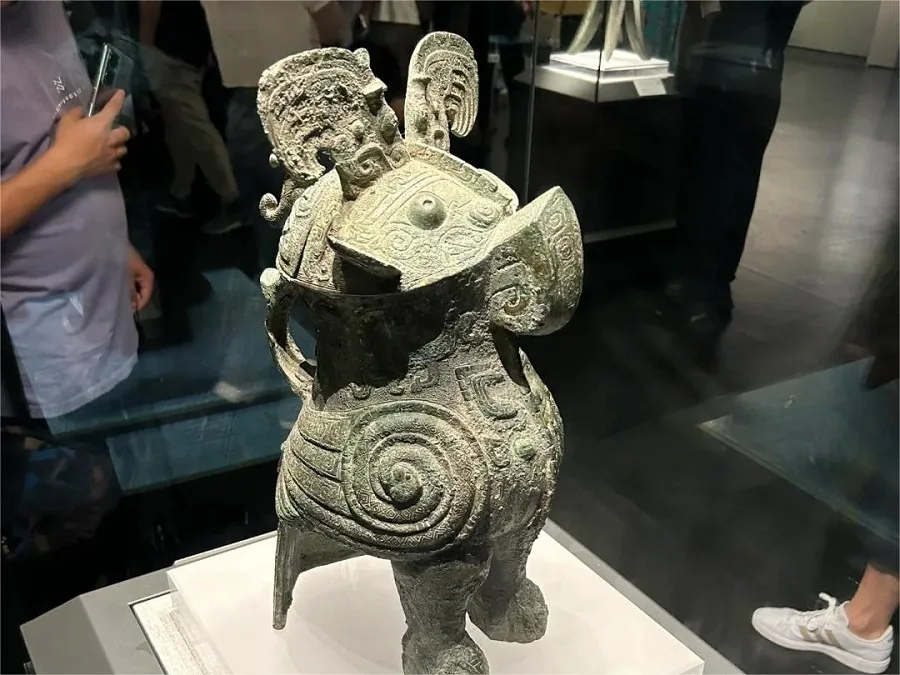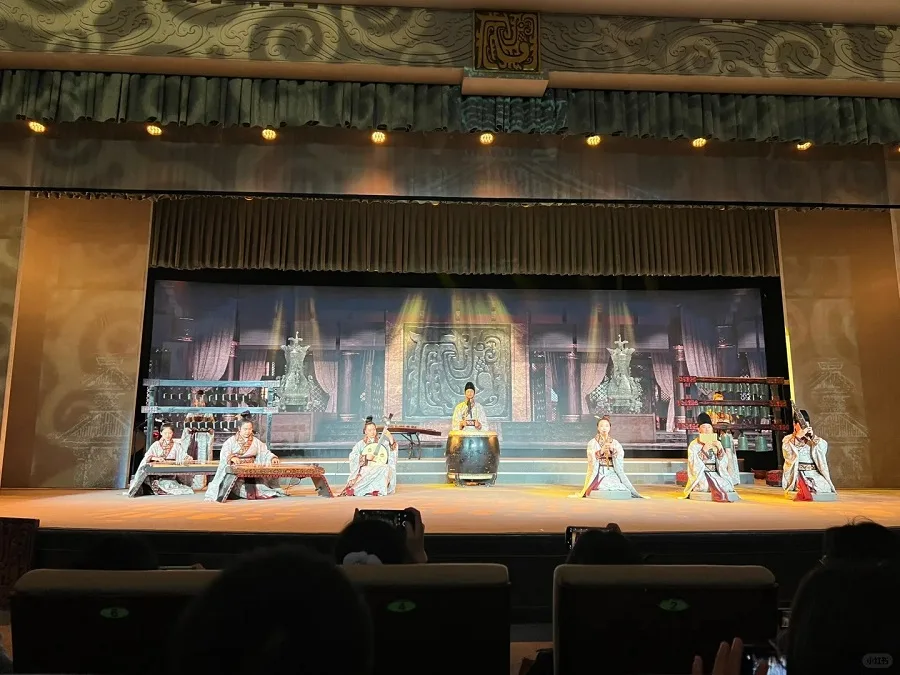Established in 1927, Henan Museum (河南博物院) covers an area of over 100,000 square meters. Its main building is inspired by the ancient Yuan Dynasty Star Observatory, depicted with artistic exaggeration as a “crowned pyramid.” The apex is in a square-dome shape, symbolizing the absorption of celestial dew above and the earth’s essence below, representing Henan Province as the cradle of Chinese civilization, blending influences from all directions. The exterior walls are painted in a yellow-brown hue, symbolizing the fertile land of the Yellow River Basin, which nurtured the ancient Chinese civilization. The main facade features light blue transparent windows and skylights, evoking the grandeur of “the water of the Yellow River flows from the sky.”
Henan Museum boasts a collection of over 170,000 artifacts, including more than 5,000 national first-grade and second-grade cultural relics. Particularly noteworthy are its prehistoric artifacts, Shang and Zhou Dynasty bronzes, various ceramics spanning different dynasties, jade artifacts, and stone carvings. With its vast quantity, diverse range, high quality, and immense cultural value, the museum serves as a treasury of cultural and artistic heritage, witnessing the development trajectory of Chinese civilization and showcasing the historical continuum of Chinese history.
Table of Contents
- Basic Information
- Location and Transportation
- Highlights of Henan Museum
- Vlog about Henan Museum
- Attractions near Henan Museum
Basic Information
| Estimated Length of Tour | 3 hours |
| Ticket Price | Free |
| Opening Hours | 9.00 -17.00; Last admission: 16.30 Closed on Mondays |
| Telephone Number | 0086-0371-63511237 0086-0371-63511239 |
Location and Transportation
Henan Museum is situated at No. 8 Nongye Road, Jinshui District, Zhengzhou City, Henan Province, China. To get there, you can choose one of the following ways:
Bus: Take bus B102, B11, B18, or B2 and get off at Bowuyuan BRT Stop (博物院站BRT).
Metro: The closest metro station to Henan Museum is Guanhutun (关虎屯) on line 2. After getting out of the station from Exit C, walk about 800 meters to the west to reach the museum.
Highlights of Henan Museum
Splendor of Huaxia, Capital Selection

This exhibition, titled “Splendor of Huaxia, Capital Selection,” serves as the main thematic display of Henan Museum, highlighting the historical significance of capital cities in the Central Plains and tracing the developmental trajectory of Chinese civilization. It immerses visitors in the rich and glorious history of Central Plains culture, showcasing its profound influence and radiance. Through a global perspective, it also explores the interactions between Central Plains culture and other regional cultures, facilitating dialogues between the Yellow River civilization and maritime civilizations as well as steppe cultures. Spanning across three floors of the main exhibition hall, with ten galleries in total, this exhibit covers periods from the Neolithic era to the Song, Jin, and Yuan dynasties, selecting over 500 artifacts from the museum’s collection to illustrate the urban culture and human life within the capitals of each historical period.
Bronze Art of Chu State in Central Plains

Located on the fourth floor, Gallery 13 of the main exhibition hall, this exhibit is divided into five sections: food vessels, wine vessels, water vessels, musical instruments, and weapons/chariot/miscellaneous items. It predominantly showcases bronze artifacts unearthed from noble tombs in the Chu state in Xichuan County, Henan Province. Organized according to the function of bronze objects, the exhibit provides a comprehensive overview of the basic characteristics of Central Plains Chu-style bronze art.
Ancient Central Plains Stone Carving Art

Located in Gallery 15 on the west side of the first floor of the main exhibition hall, this exhibit is divided into four sections: Han Dynasty portrait stone carvings, tombstone carvings, epitaphs, and Buddhist sculptures. It systematically introduces four forms of stone carving art, showcasing the exquisite craftsmanship and aesthetic interests of ancient artists.
Ancient Chinese Music Performances

Henan, situated in the heartland of China, has a rich tradition of music culture dating back thousands of years. From the bone flutes of Jiahu dating back eight millennia to the bells, drums, chimes, and stringed instruments of the Xia, Shang, and Zhou periods, as well as the music and dances of the Han and Tang dynasties, the ancient music of the Central Plains flows like a mighty river throughout history, showcasing its diversity and grandeur. Since its establishment in 2000, the Henan Museum Ancient Music Ensemble has been dedicated to the restoration and research of ancient musical artifacts from the Central Plains. They meticulously reconstruct ancient musical scores, costumes, and performance settings, presenting concerts on various themes that have garnered praise from audiences both domestically and internationally.
Performance Schedule: Every Tuesday to Sunday, with two performances each day at 11:00 and 16:00, lasting approximately 30 minutes per show.
Performance Venue: Huaxia Ancient Music Hall, located on the west side of the first floor of the main exhibition hall of the Henan Museum.



